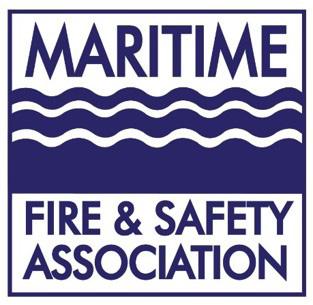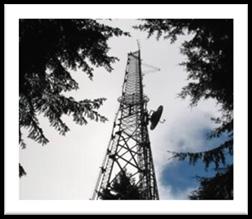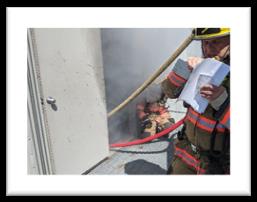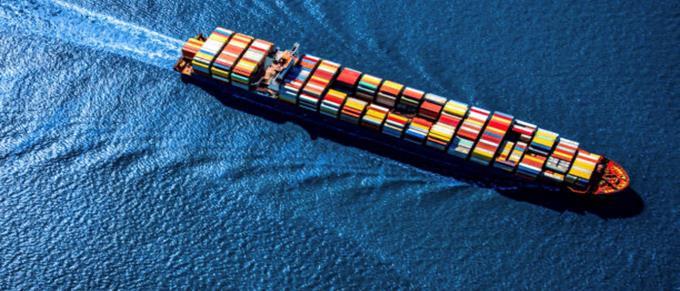
5 minute read
Maritime Fire & Safety Association
PSGP FUNDING AWARDED
The Maritime Fire & Safety Association has applied for and received notice of allocation for Port Security Grant Program funding to support the following projects.
Advertisement
Unified Communications
Enhance the existing network of equipment to allow for fully interoperable communications network for the region
Investment in mobile communications platforms
Additional training for firefighters
Increase access to Shipboard Firefighting Training through the region Improve the ability to collaborate and share effective strategies nationally
ENHANCED UNIFIED COMMUNICATIONS
Background
In 2017, the Maritime Fire & Safety Association contracted to have a Radio Equipment Replacement Study (“Study”) performed by ADCOMM Engineering. The intent was to identify the “end-of-life” or “end-of-service” dates for radio system components. Since the study was performed, there have been advances in radio system technology, which warrant changes to the Study’s identified recommended infrastructure equipment replacements.
Why Change is Required
The primary driver for change is the move towards converged internet protocol (IP) networks due to the lack of circuit-switched time-domain multiplex (TDM) infrastructure equipment. TDM equipment includes landline “copper-wire” plain-old-telephone (POTs) lines, digital subscriber line (DSL), and T1 channel banks. This equipment is no longer manufactured and if available, can only be purchased on the used market. A newer IP-based backhaul network is being designed to be highly reliable and sufficiently resilient to support emergency radio communications. Additionally, it must be designed to be secure to ensure unauthorized personnel cannot gain access to the critical communications network.

Improvements Expected
By changing the backhaul network from TDM to IP, MFSA will gain: Longevity of equipment. The replacement equipment becomes currently available, off-the-shelf with warranties and replacement cycles. Ease of maintenance. The replacement equipment is simpler to maintain by existing IT personnel. IP-based remote access allows for simple remote monitoring through alarm notifications and ease of troubleshooting problems. Reduced points of failure. With IP-based equipment, routers/ switches and Ethernet patch panels take the place of punch blocks and physical wires. A lesser number of connection points reduces the potential for errors due to physical break points. Simple web-based interface. The replacement equipment can be accessed via IP connectivity with current, available Windows PCs and common software. Note: some equipment is accessible via IP connectivity now but requires Windows 7 or older software.
Project Timeline
Engineering design and procurement planning work has been completed and on-site equipment installation is anticipated to begin in late spring 2022.
MOBILE COMMUNICATIONS PLATFORM
Background
In 2016, the MFSA was awarded funding to update the Lower Columbia Maritime Fire Safety/Security Plan. One of the areas identified as a key component to address was the MFSA/FPAAC Incident Radio Communications Plan

Why Change is Required
Although some individual participating FPAAC fire agencies have mobile communication assets, the ability of multiple agencies and responders to communicate with each other during an incident is often identified as an issue during drills and responses. This project will provide a dedicated regional asset for interoperable communications at the incipient stages of a shipboard fire or oil spill incident.
Project Timeline
1Q 2022: Contractor Implementation,
System Engineering and final design 2Q 2022: Contractor Fabrication of Mobile Unit 3Q 2022: Contractor Installation of
Communications Equipment 1Q 2023: Final System Testing,
Configuration, Optimization
Background
Fire Protection Agencies Advisory Council (FPAAC) was formed by MFSA to set forth a comprehensive system to ensure effective response to shipboard fires in the Lower Columbia region. Member fire agencies voluntarily contribute both staff time and equipment costs for participation in meetings, drills and other training exercises.
Why Continued Training is Required
FPAAC developed a Technician Level Training Program which currently supports 42 participants. Prior to participation in the Technician Level Training, participants must complete both Awareness and Operations Level Training. This program is offered to all 13 fire agencies participating in FPAAC, as well as all others in the region. This investment will support the cost of Awareness and Operations Level Training Courses for personnel to receive instruction in both levels of training. Additionally, this will allow for MFSA to conduct a specialized Technician Level Training Course at a live fire training facility. As there are no such facilities in the Pacific NW region, an out-of-state facility is necessary. This training is critical to an effective shipboard fire response.

LEGISLATIVE SUPPORT
A bipartisan group led by Representative Suzanne Bonamici (D-OR), including Representatives Earl Blumenauer (D-OR), Peter A. DeFazio (D-OR), Kurt Schrader (D-OR), and Jaime Herrera Beutler (R-WA) announced the federal grant award to MFSA. The
award had the support of the entire Pacific Northwest Congressional Delegation as well as United States Coast
Guard Sector Columbia River. This funding is critical to providing a comprehensive system to effectively respond to shipboard fires and oil spills in the Lower Columbia Region. It will allow for MFSA to strengthen our fire safety, security, and emergency response program and update our radio communications system.
For more information, please visit our website: www.mfsa.com Holly Robinson, General Manager: robinson@pdxmex.com Mason Sullivan, Administrative Coordinator: sullivan@pdxmex.com
U.S. COAST GUARD PACIFIC COAST – PORT ACCESS ROUTE STUDY (PAC–PARS)
What is the PAC-PARS?
The Pacific Port t Access Route Study (PAC-PARS) will be the first comprehensive evaluation of maritime traffic patterns along the Pacific Coast bordering California, Oregon, and Washington. Vessel traffic, offshore renewable energy, aquafarms, as well as commercial and government space launching activities are some of the maritime related changes occurring along the Pacific Coast.
The U.S. Coast Guard (USCG) is conducting this study to evaluate the usage of coastal waterways, including the navigational conditions for coastal and outer-continental shelf transits.
The study will provide a baseline to assist with future determinations regarding the suitability of waterways for current and future maritime activities and if existing routing measures are adequate.



Access to the study can be found by scanning the QR Code at the bottom of this flyer, or visit: https://www.regulations.gov
And search the docket number:
Questions or concerns can be sent to:
PACPARS@USCG.MIL
Please submit all official comments to the docket above. Comments and related material must be received on or before 25 January, 2022.










